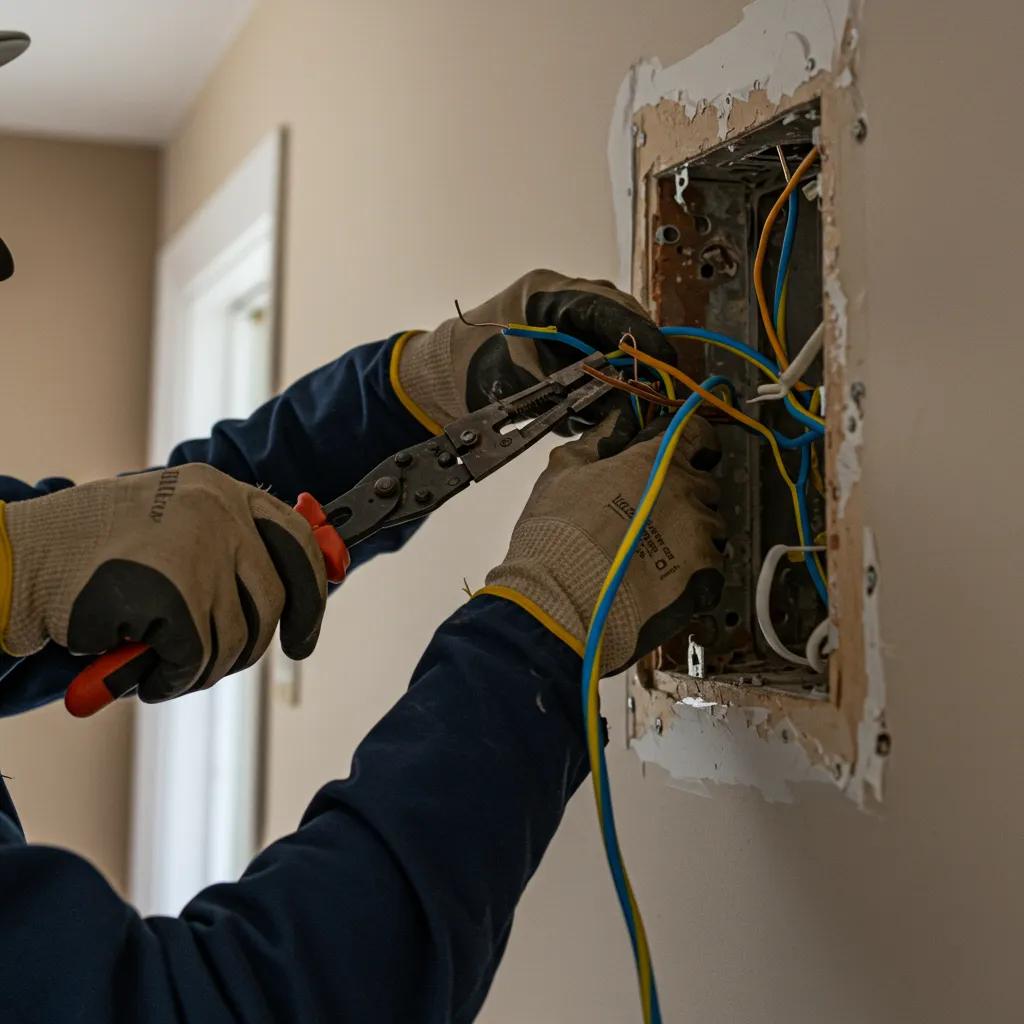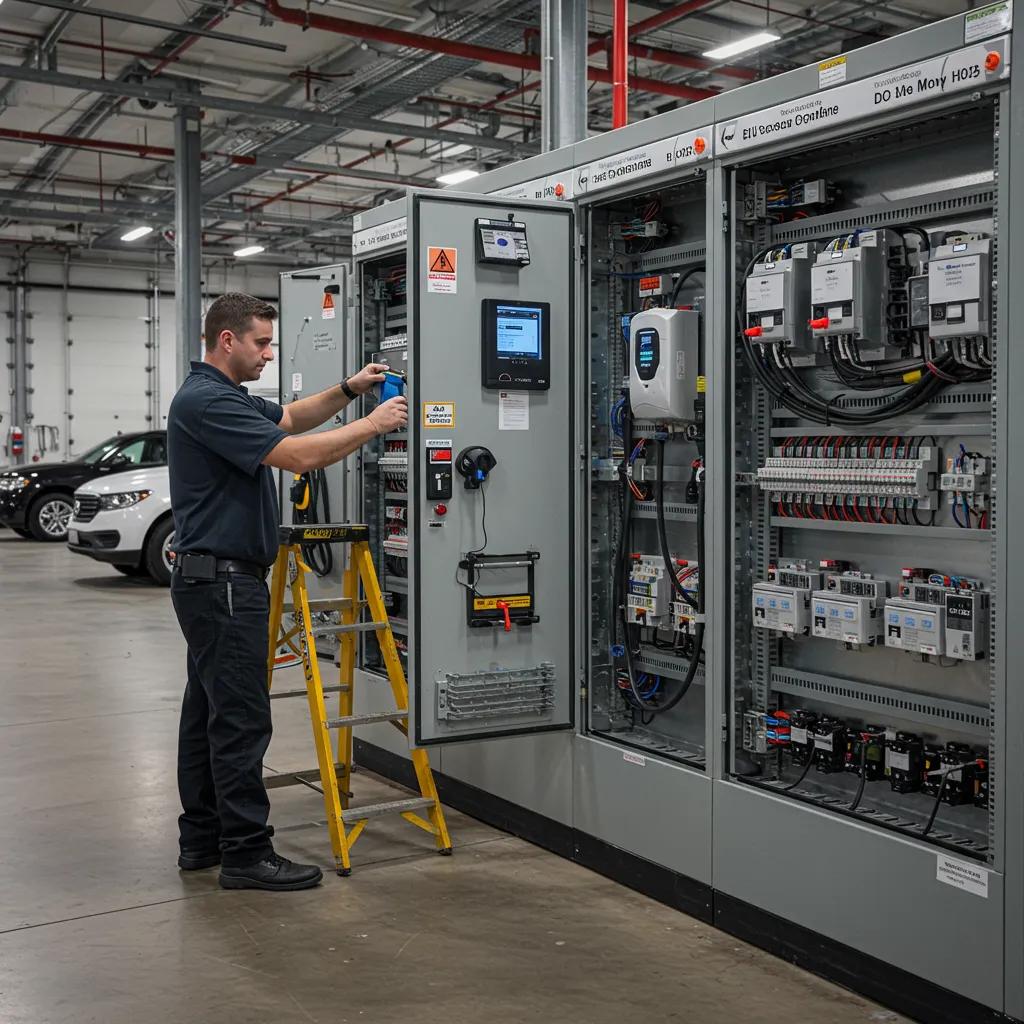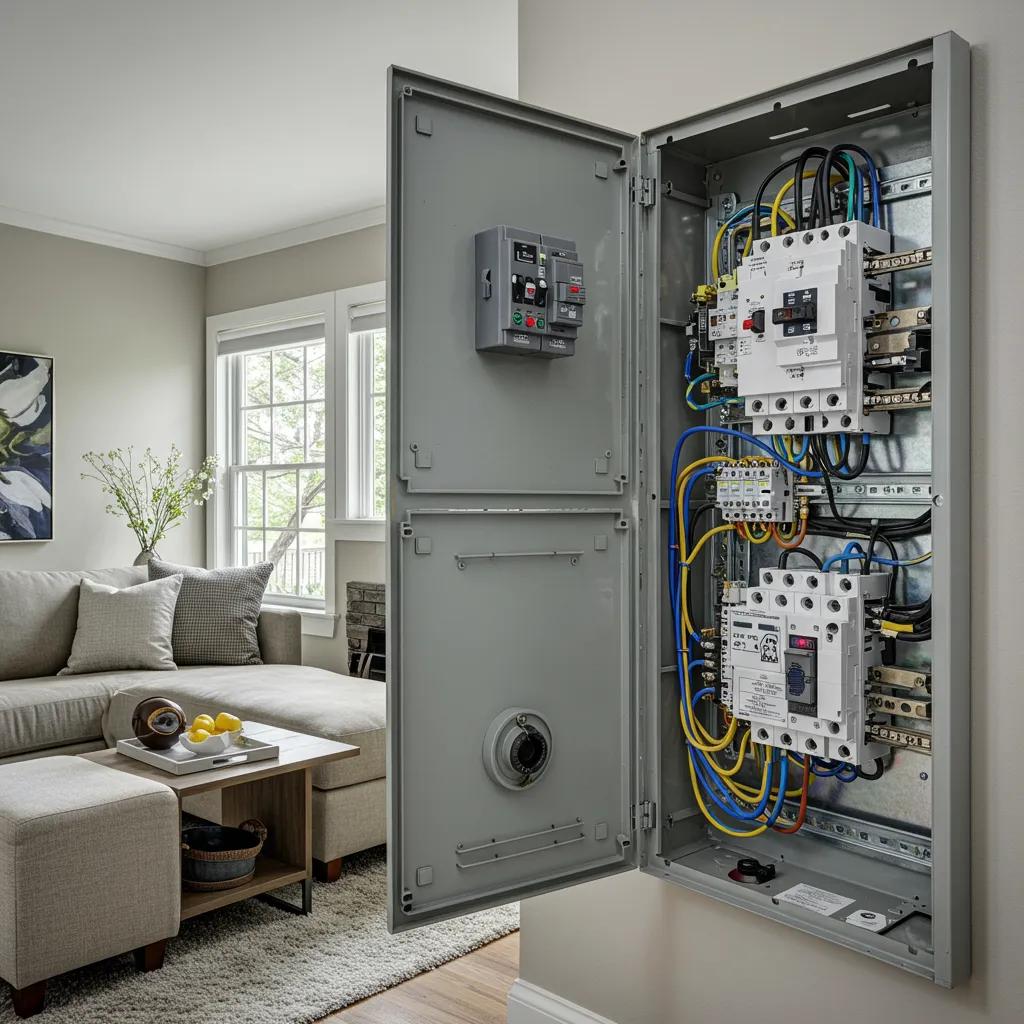Electrical Upgrades Lexington KY: Essential Panel, Wiring, and Repair Services for Safety and Efficiency
Electrical upgrades are targeted improvements to a building’s electrical system that resolve aging components, increase capacity, and reduce risk by replacing or enhancing panels, wiring, breakers, and protective devices. These upgrades work by removing obsolete parts, redistributing loads, and adding modern safety devices such as AFCI, GFCI, and surge protection, which together improve reliability and cut fire and shock hazards. Homeowners and business operators in Lexington, KY benefit through fewer outages, compliance with the National Electrical Code (NEC), and the capacity to support modern loads like EV chargers and 200 amp service. This guide explains clear signs that you need a panel upgrade, how rewiring enhances safety, available repair services, commercial upgrades that support fleet operations, and inspection and protection strategies that keep properties safe and efficient. Read on for practical cost factors, stepwise service descriptions, checklists for fleet and residential planning, and specific upgrade recommendations tailored to Lexington’s permitting and inspection context.
What Are the Signs You Need an Electrical Panel Upgrade in Lexington KY?
An electrical panel upgrade is a replacement or enhancement of the service equipment that distributes power, and it improves safety by providing appropriate overcurrent protection and secure connections. Upgrades work by increasing amperage capacity, replacing worn busbars and breakers, and adding modern protection devices to reduce overheating and arcing risks. The primary benefit is predictable power delivery and reduced fire hazard while enabling new appliances and EV charging. Below are the most common, actionable signs to watch for and steps to take when you observe them.
The following list explains common warning signs of a failing panel and what they indicate.
- Frequent breaker trips or nuisance resets: Repeated tripping suggests overloads or degrading breakers that cannot safely handle current.
- Flickering or dimming lights when appliances start: Voltage drop or loose connections in the panel create visible flicker and indicate load imbalance.
- Burn marks, scorch smells, or hot enclosure: Thermal damage or odors point to dangerous overheating and require immediate professional evaluation.
- Use of fuses or very small service ratings: Outdated fuse boxes or low-amperage service limit modern appliance use and increase risk.
How Do Flickering Lights and Tripping Breakers Indicate Panel Issues?
Flickering lights and tripping breakers are symptoms of load imbalance, deteriorating breaker contacts, or loose connections within the panel that interrupt steady voltage and current flow. Loose neutrals or overloaded circuits cause voltage fluctuations when heavy loads start, which manifests as momentary dimming or flicker and can accelerate wear on electronics. Tripping breakers protect against overloads and short circuits, so recurring trips signal that the panel or circuit design no longer meets demand and needs assessment. If you notice these behaviors, shut off high-draw devices until a licensed electrician completes an inspection to identify whether a panel upgrade or circuit redistribution is required.
Why Is an Outdated Fuse Box a Safety Hazard?
An outdated fuse box lacks modern overcurrent protection features and typically cannot accommodate AFCI/GFCI devices, making it less capable of preventing arc-faults and ground-fault shocks. Fuse systems may rely on replacement fuses that allow temporary solutions rather than addressing the root cause, and wiring connections in older enclosures can become brittle or corroded with age. Modern breaker panels offer resettable protection and easier integration of surge protection and dedicated circuits, improving safety and compliance with current NEC requirements. Replacing a fuse box with a modern panel reduces fire risk and simplifies future upgrades.
When Should You Consider Upgrading to a 200 Amp Electrical Panel?
Consider upgrading to a 200 amp electrical panel when adding major appliances, installing EV chargers, building additions, or when multiple high-demand devices run simultaneously and trip breakers. A 200 amp service increases headroom for simultaneous loads, supports faster EV charging, and future-proofs a property for additional circuits and commercial equipment. Professional load calculations verify whether an upgrade is necessary and inform permitting and inspection steps required by Lexington authorities. Begin planning an upgrade when you anticipate expanded electrical use to avoid interim capacity constraints.
Residential Service Panel Upgrades for Future Electrification Needs
This chapter details the results of an analysis conducted by the California Center for Sustainable Communities at UCLA into the anticipated need for future electric service panel upgrades within the residential building sector to support future decarbonization targets introduced in the LA100 plan. All of the different transformation pathways explored in the original LA100 feasibility study assumed significant increases in the future adoption of electric vehicles as well as electrification of existing gas-powered end-uses. However, both of these technology transformations will potentially result in significant increases in the demand for electrical energy and power. One significant barrier to increasing the service capacity for LADWP customers in order to facilitate this transition is the rated capacity of their electrical service panels. These are pieces of customer owned hardware that function as the interface between the utility distribution network and the building’s internal energy
Service Panel Upgrade Needs for Future Residential Electrification, ED Fournier, 2023
How Does Home Rewiring Improve Electrical Safety and Performance in Lexington KY?

Home rewiring replaces aging or hazardous conductors and connections with modern wiring systems that carry current reliably and meet code, improving safety by eliminating failure-prone materials and poor splices. The mechanism is straightforward: new copper wiring and properly installed terminations reduce resistance and overheating while allowing AFCI/GFCI protection to be installed where needed. The result is fewer outages, lower fire risk, and compatibility with modern appliances and charging infrastructure.
Below are common wiring types to compare when considering rewiring decisions in Lexington.
What Are the Common Signs of Bad Wiring in Older Homes?
Bad wiring often reveals itself through discolored outlets, persistent burning smells, warm faceplates, or outlets that spark when in use, all of which indicate dangerous heat or arcing at connections. You may also find knob-and-tube runs, aluminum conductors, or frayed insulation during inspections—each demanding different remediation approaches. Immediate steps include unplugging suspect devices, avoiding DIY repairs on wiring, and arranging for a licensed electrician to perform a safety inspection. Prompt rewiring or targeted repairs reduce the likelihood of electrical fires and restore dependable service.
How Much Does Home Rewiring Cost in Lexington KY?
Rewiring costs vary with home size, wall access, materials, and permit requirements; key drivers include square footage, number of circuits, and the need to replace the panel or service. Typical projects range broadly, and accurate estimates require on-site evaluation to account for concealed conditions and local inspection fees. Obtain multiple quotes and confirm that estimates include permitting, testing, and NEC-compliant documentation to avoid surprises. Investing in a full estimate saves money long term by reducing incremental fixes and improving system longevity.
Why Is Aluminum Wiring Replacement Important for Safety?
Aluminum wiring can loosen at terminations and oxidize, increasing resistance and localized heating that elevates fire risk, particularly at older push-in connectors not rated for aluminum. Replacement with copper or installation of approved connectors and pigtails mitigates the hazard while ensuring compatibility with modern breakers and devices. Licensed electricians assess whether full replacement or approved remediation is appropriate based on circuit condition and load. Proper remediation restores safe terminations and reduces the likelihood of thermal failures.
What Electrical Repair Services Are Available in Lexington KY for Residential and Commercial Needs?
Electrical services in Lexington include breaker and fuse replacement, panel upgrades, home rewiring, outlet and lighting upgrades, GFCI/AFCI installation, surge protection, and commercial-scale solutions like service upsizing and generator transfer switch installs. These services work by diagnosing faults, securing connections, installing code-compliant devices, and coordinating permits and inspections to ensure lasting, safe repairs. For commercial clients, upgrades may require phased work to maintain business continuity and meet local inspector schedules, which emphasizes planning and professional execution. Businesses often combine infrastructure upgrades with marketing programs because Fleet wrap bookings & brand visibility present an opportunity to refresh vehicle appearance while electrical improvements enhance operational reliability.
How Do Licensed Electricians Handle Circuit Breaker and Fuse Box Replacements?
Licensed electricians begin with a diagnostic inspection to identify failing components, test load distribution, and locate hazards, which informs whether replacement or remediation is necessary. They then obtain required permits, isolate power, remove obsolete equipment, install modern breakers or a new panel, and secure all terminations following NEC practices. After installation, they perform load testing, arc-flash checks where applicable, and document the work for inspections and future maintenance. Proper permitting and testing ensure the replacement resolves the underlying issue and provides verifiable safety improvements.
What Are the Benefits of Professional Electrical Repairs Over DIY?
Professional repairs offer safety, code compliance, warranty coverage, and documented permits that protect property owners from liability and ensure long-term reliability compared with DIY fixes. Electricians bring experience diagnosing hidden issues, matching breaker types, and executing secure connections that prevent recurring failures and reduce fire risk. While homeowners can handle minor tasks like swapping faceplates, any circuit modification, panel work, or rewiring should be handled by a licensed professional. Investing in professional work protects occupants, preserves insurance coverage, and aligns installations with NEC requirements.
How Can Commercial Electrical Upgrades Support Fleet Operations and Business Efficiency in Lexington KY?

Commercial electrical upgrades increase capacity, add dedicated circuits, and integrate EV charging infrastructure to support fleet reliability and faster vehicle turnaround, thereby improving operational efficiency and reducing downtime. Upgrades work by allocating power with dedicated circuits, installing charger-ready panels, and adding backup power options so fleets can charge predictably and maintain schedules. The operational benefit for fleet managers is consistent vehicle readiness and predictable charging windows, which lowers idle time and optimizes routing and utilization. Below is a concise list of key upgrades businesses should consider for fleet readiness.
- Commercial panel capacity increases: Provide headroom for multiple high-power chargers and heavy equipment.
- Dedicated circuits for chargers: Ensure each charger has stable, uninterrupted supply for consistent charging rates.
- Surge protection and transfer switches: Protect sensitive electronics and enable rapid switchover to backup power.
What Are the Key Electrical Upgrades for Lexington Businesses?
Key upgrades include service upsizing to handle EV chargers and compressors, installation of dedicated circuits for high-draw equipment, whole-building surge protection, and automatic transfer switches for generator integration. Each upgrade addresses a specific risk: capacity shortages, circuit conflicts, equipment damage from surges, and power continuity during outages. Coordinating upgrades with local permitting and inspectors ensures systems are usable for commercial loads and compliant with NEC standards. Planning these upgrades in advance prevents operational interruptions and aligns infrastructure with growth goals.
How Do Dedicated Circuits and EV Charger Installations Benefit Fleet Operations?
Dedicated circuits eliminate load conflicts that slow charging and cause nuisance tripping, while properly sized circuits enable faster charging rates and predictable vehicle availability. Charger selection and scheduling software, combined with electrical assessment, allow fleet managers to stagger charging and reduce peak demand charges. A professional electrical assessment verifies power needs, recommends charger types, and helps create a phased implementation plan that minimizes business interruption. Implementing dedicated circuits and chargers supports efficient fleet turnaround and long-term operational savings.
What Are the Safety Tips and Inspection Services for Electrical Systems in Lexington KY?
Regular inspections and protective device upgrades reduce risk by identifying degraded connections, overloaded circuits, and missing safety devices before they fail. Inspections work via visual checks, thermal imaging, and electrical testing to reveal hot spots, poor terminations, and code non-compliance; the benefit is prioritized repairs that avert fires and downtime. Below are recommended inspection cadences and protection strategies to maintain safe systems in homes and businesses.
- Annual visual checks: Homeowners should visually inspect outlets and panels for obvious damage every year.
- Professional safety inspection every 3–5 years: Schedule a licensed electrical safety inspection periodically or after renovations, water intrusion, or purchase of an older property.
- Immediate inspection triggers: Burning smells, frequent trips, and visible damage require prompt professional evaluation.
How Often Should You Schedule Electrical Safety Inspections?
Baseline guidance recommends a full professional electrical safety inspection every 3–5 years for typical homes, with more frequent checks after renovations, persistent electrical issues, or when buying an older property. Commercial facilities with fleet operations should schedule inspections annually or aligned with planned upgrades to ensure charging infrastructure and panel capacity remain safe under heavy use. Immediate inspections are warranted after unusual odors, repeated breaker trips, or visible damage to outlets and panels. Establishing a routine inspection cadence prevents small issues from becoming dangerous failures.
What Are the Benefits of GFCI and AFCI Outlet Installations?
GFCI outlets protect against ground-fault shocks by cutting power when leakage current is detected, making them ideal for kitchens, bathrooms, garages, and outdoors. AFCI devices detect arcing faults that can start fires and are required in bedrooms and many living areas to reduce fire risk from damaged or aging wiring. Installing these devices provides targeted protection where hazards are most likely and complements whole-home surge protection strategies. A licensed electrician can map optimal installation locations based on NEC guidance and property layout.
How Does Surge Protection Enhance Home Electrical Safety?
Surge protection reduces damage to electronics and appliances by diverting transient voltage spikes away from sensitive equipment, and service-panel surge protectors offer whole-home protection that point-of-use strips cannot match. The mechanism routes excess voltage to ground, protecting devices and reducing replacement costs and downtime after storms or utility events. Combining surge protection with proper grounding, AFCI/GFCI, and professional inspections creates layered defense against electrical hazards. For businesses, surge protection preserves critical operational hardware and supports reliable fleet charging infrastructure.
Fleet wrap bookings & brand visibility can complement commercial electrical upgrades by aligning operational improvements with refreshed vehicle appearance and cohesive branding opportunities. Commercial clients upgrading electrical infrastructure may find value in coordinating Fleet wrap bookings & brand visibility to maximize publicity and present upgraded fleet capabilities to customers.

